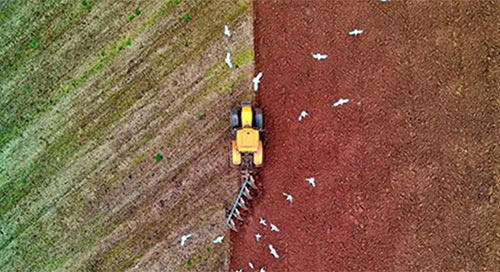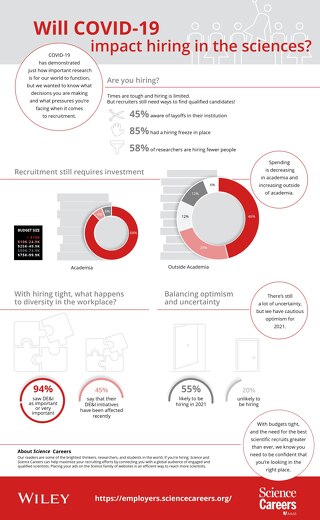primer-on-plagiarism-top-tips-for-editors-when-facing-plagiarism-issues
February 04, 2020
We hosted an integrity and ethics workshop at the Wiley Editor Symposium in October 2019 to enable editors to share their experiences on the range of research integrity and publishing ethics issues that arise on their journals, as well as providing guidance on how to handle such issues. Here, we share the discussion we had specifically about issues pertaining to plagiarism, and explore how to handle cases of suspected plagiarism when they arise.
What types of integrity and ethics issues may editors face on their journals?
guidance they shared below, which we hope will be of use.
What is plagiarism?
The US Office of Research Integrity’s definition of plagiarism “considers plagiarism to include both the theft or misappropriation of intellectual property and the substantial unattributed textual copying of another’s work.” This can extend to ideas, text, images, and intellectual property.
When does plagiarism arise and why should we be concerned about it?
Plagiarism can occur at any stage of the research cycle (i.e. planning, design and analysis, preparing for publication, or post-publication). Editors can encounter it at every stage: at submission, during the peer review process, in revised submissions, following acceptance, and in publication. Plagiarism deprives researchers of recognition for, and ownership of, their ideas; gives undeserved credit for work which is not original; distorts the published literature; infringes copyright, which could potentially have legal ramifications, and so it is essential that plagiarism is investigated when detected. Not only does it waste the valuable time of editors, reviewers, authors and readers, it is also a very time-consuming issue for publishers, too.
Of the cases submitted to Wiley’s Integrity in Publishing Group in 2018, 33 of these cases involved some form of plagiarism (10% of the total number of cases).
The phrases “text recycling”, “redundant (duplicate) publication” and “salami slicing” are often used in conversations about plagiarism, but what do they mean?
Text recycling, or what is sometimes more frequently referred to as “self-plagiarism”, is where an author reuses portions of their previously published text in their other published works. The concept of self-plagiarism can pose its own challenges because many authors do not believe it is possible to plagiarise yourself. This is why the term, “self-plagiarism”, can be unhelpful and it is perhaps more appropriate to refer to such instances as “text recycling” or “text overlap” instead. Occasionally, we encounter issues pertaining to “redundant (or duplicate)” publication. Redundant publication can refer to either major overlap (i.e. based on the same dataset; utilises the same methodology; evidence of text recycling) or minor overlap (i.e. same methodology but extended data set; some evidence of text recycling) with another previously published work. In most instances, this is overlap with the authors’ previously published work. Due to the distortion of the literature that cases of major overlap with another previously published work pose, in these instances, it is usually appropriate for a journal to consider retracting the paper. Minor overlap, also known as “salami slicing”, is where there are some elements of redundancy (i.e. similar methodology), but the publication can in theory stand alone. Journals vary in their views to “salami slicing”, with some deeming this an unacceptable practice, whilst others are willing to consider such papers. It is imperative that, in cases of minor overlap, the authors disclose that the paper is a secondary publication and provide a citation to the primary publication.
Are there ever times when duplicate publication is ok?
Yes, translations; adapted theses; pre-prints; conference posters and abstracts; data (methods alone in a repository) are generally not considered to be prior publication. The same holds for re-published guidelines to aid dissemination to the relevant professional, academic, or research communities they are intended to serve. In all these instances, it’s important to check the journal’s policy on such re-publications and ensure the appropriate permissions have been received – particularly in the cases of translations and re-published guidelines. Ensuring that the article gives clear reference to the original source, or related posts or presentations, will provide transparency for readers.
How can plagiarism be prevented?
Editors can put in place mechanisms that make plagiarism easier to identify, and to make the management of potential cases more straightforward. For example, does your journal have up-to-date author guidelines? Does your journal have an explicit pre-print policy or a novelty policy? Does your editorial office use iThenticate to run similarity reports routinely for new submissions and explain to authors how those reports are acted on?
Are there tools to detect plagiarism?
iThenticate is a tool that allows a submitted manuscript to be compared against an extensive database of published content. The tool can be run manually or automatically for manuscripts at any stage of the editorial workflow and many journals run it on every new submission. Two outputs can be generated: a report that links the discovered text overlaps to their source, and an Overall Similarity Index, which is a cumulative percentage of the matches within the document. A submission could, for example, receive a score of 51%, but that might comprise more than forty small overlaps or it might comprise a 51% overlap with a single source. The former situation may be relatively unconcerning, while the latter situation is certainly worthy of further investigation. Therefore, Overall Similarity Index alone is simply a summary of overlap and is not diagnostic of plagiarism; detailed interpretation of the report itself is essential in determining the source, context and extent of any single overlap.
What could an editor do when faced with a potential case of plagiarism?
Have you ensured you have followed the appropriate COPE flowcharts for suspected plagiarism in a submitted manuscript or a published article? Can you determine if it’s minor plagiarism or clear plagiarism? Are there other considerations to discuss? (See this COPE discussion paper)
Throughout your investigations, please do keep your Wiley Journal Publishing Manager informed – they are there to support and guide you in the process and will consult with Wiley’s Integrity in Publishing Group for additional support, as and when necessary.
What could be appropriate next steps?
After considering the case carefully, editors may have further questions, require more evidence, and wish to follow up with the authors and/or their institution. If so, all correspondence should be neutral, explaining the journal policy and asking for an explanation. Any communication should ensure anonymity for whistle-blowers if this is how the issue came to light. COPE have template letters to help editors (member login required). Your Journal Publishing Manager will also be able to review any planned communications before they are sent out.
What might the possible outcomes be?
The role of publishers and editors is to ensure the integrity of the published literature. It is the role of the author’s institution to further investigate and provide advice. After due diligence, our shared goal is to establish a firm evidence base for either upholding or correcting the published literature. This may include taking no further action, publishing a correction, or retracting.
We’d like to extend our thanks to all the editors who participated in the workshop, and to the Journal Publishing Managers who took part in further discussions. You can learn about other workshops from the Wiley Editor Symposium, as well as all other sessions, here.













